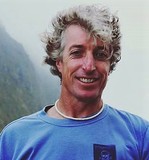- ALSA Home
- →
- Documents
- →
- Research Events
- →
- View Item
JavaScript is disabled for your browser. Some features of this site may not work without it.
| dc.contributor.author | Dilley, B. | |
| dc.contributor.author | Davies, D. | |
| dc.coverage.spatial | Nightingale Island | |
| dc.coverage.spatial | Tristan da Cunha Archipelago | |
| dc.date.accessioned | 2021-03-05T15:52:46Z | |
| dc.date.available | 2021-03-05T15:52:46Z | |
| dc.date.created | 18-Aug | |
| dc.date.issued | 18-Aug | |
| dc.identifier.uri | http://hdl.handle.net/123456789/28402 | |
| dc.description.abstract | Island finches have been especially influential in the development of evolutionary theory, the most famous example being Lack’s classic study of speciation among Darwin’s finches on the Galapagos islands. The volcanic islands in the Tristan da Cunha archipelago in the south Atlantic are home to an equally exciting story of parallel ecological speciation of Nesospiza finches on the two smaller islands: Inaccessible (14 km2. and Nightingale (4 km2.. Like Darwin’s finches, Nesospiza finches (or buntings as they are often called. evolved from finch-tangers which were carried on the prevailing westerly winds across 3000 km of ocean from South America. Today, two species are recognised on Nightingale Island: an abundant small-billed dietary generalist (N. questi. and a scarce large-billed specialist (N. wilkinsi. which specialise on the fruits of the island tree Phylica arborea. Small- and large-billed forms also occur on Inaccessible Island, but with considerable hybridisation in one habitat type, resulting in only a single species being recognised at this island (N. acunhae.. Peter Ryan’s work on the evolution of these buntings showed the small- and large-billed forms were likely to have evolved independently on each island – quite remarkable, considering the islands are only 20 km apart! We present our recent research from Nightingale Island where we closely followed these two sympatric species over two summer breeding seasons. Despite being each other’s closest relatives, the two species differ ecologically, with lower reproductive output by the large-billed N. wilkinsi. We test whether this reduced chick production is offset by higher first winter survival, and also assess other threats to the tiny population of N. wilkinsi (roughly 100 pairs.. Most worrying is the recent finding of an invasive scale insect and associated sooty mould that could is likely to reduce fruit production by island trees. - Abstract as displayed in the - Abstract booklet. The presentation on the day may differ from the - Abstract. | en_ZA |
| dc.description.sponsorship | Sponsored by the the Department of Science and Innovation(DSI) through National Research Foundation (NRF) - South Africa | en_ZA |
| dc.description.statementofresponsibility | Antarctic Legacy of South Africa | en_ZA |
| dc.format | en_ZA | |
| dc.language | English | en_ZA |
| dc.language.iso | en_ZA | en_ZA |
| dc.publisher | South African National Antarctic Programme (SANAP. | en_ZA |
| dc.relation | SANAP Symposium 2018 | en_ZA |
| dc.rights | Copyright | en_ZA |
| dc.rights | Copyright | en_ZA |
| dc.subject | Research | en_ZA |
| dc.subject | Science | en_ZA |
| dc.subject | Meetings | en_ZA |
| dc.subject | Symposium | en_ZA |
| dc.subject | SANAP Symposium 2018 | en_ZA |
| dc.subject | Living Systems | en_ZA |
| dc.subject | Terrestrial Science | en_ZA |
| dc.subject | Fauna | en_ZA |
| dc.subject | Birds | en_ZA |
| dc.subject | Ornithology | en_ZA |
| dc.subject | Finches | en_ZA |
| dc.subject | Tristan da Cunha archipelago | en_ZA |
| dc.subject | South Atlantic | en_ZA |
| dc.subject | Inaccessible Island | en_ZA |
| dc.subject | Nightingale Island | en_ZA |
| dc.subject | Buntings | en_ZA |
| dc.subject | Evolution | en_ZA |
| dc.subject | Sympatric Species | en_ZA |
| dc.subject | Breeding Seasons | en_ZA |
| dc.title | The finches of Nightingale Island, Tristan da Cunha archipelago | en_ZA |
| dc.type | Abstracts | en_ZA |
| dc.rights.holder | Antarctic Legacy of South Africa | en_ZA |
| dc.rights.holder | Dilley, B. | en_ZA |
| dc.rights.holder | Davies, D. | en_ZA |
| iso19115.mdconstraints.uselimitation | This item and the content of this website are subject to copyright protection. Reproduction of the content, or any part of it, other than for research, academic or non-commercial use is prohibited without prior consent from the copyright holder. | en_ZA |
| iso19115.mddistributor.distributorcontact | South African National Antarctic Programme -SANAP. | en_ZA |
| iso19115.mdformat.name | en_ZA | |
| iso19115.mdidentification.deliverypoint | Antarctic Legacy of South Africa, Faculty of Science, Private Bag X1, Matieland. Stellenbosch. South Africa. | en_ZA |
| iso19115.mdidentification.electronicmailaddress | antarcticlegacy@sun.ac.za | en_ZA |
| iso19115.mdidentification.organizationname | University of Cape Town | en_ZA |
Files in this item
This item appears in the following Collection(s)
-
Research Events [502]
Material directly related to official scientific and research events

